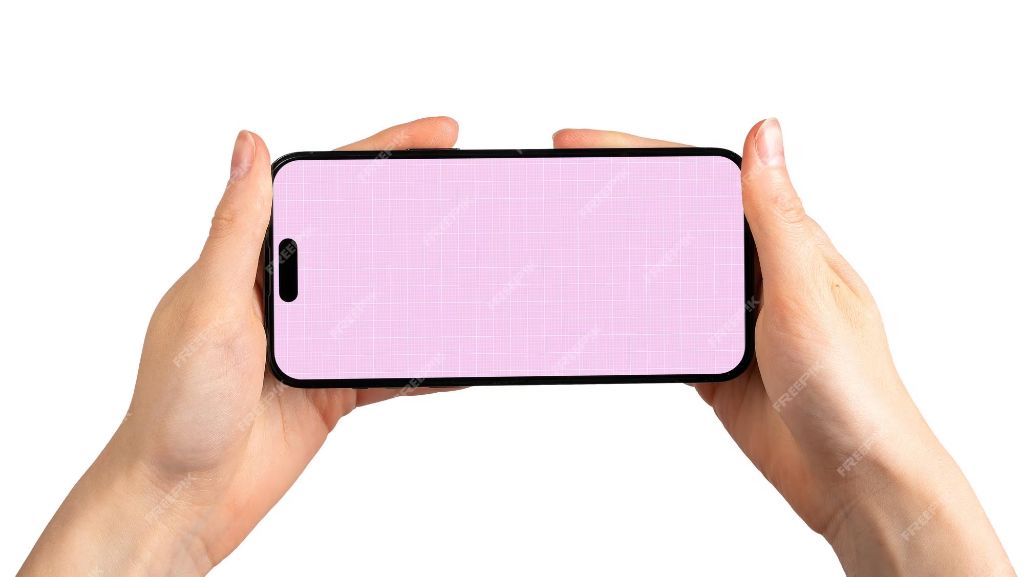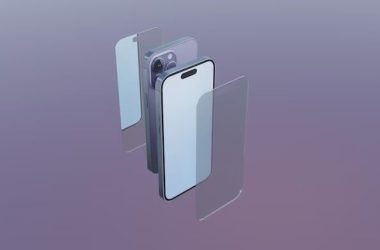The aspect ratio of iPhone displays has changed several times over the history of the device. Aspect ratio refers to the proportional relationship between the width and height of a display. The original iPhone models, starting with the first iPhone in 2007 up through the iPhone 4S in 2011, all featured a 3.5″ display with a 3:2 aspect ratio.
Beginning with the iPhone 5 in 2012, Apple increased the display size to 4″ while maintaining the same 3:2 aspect ratio. The iPhone 5, 5S, and 5C all shared this same 4″ display. In 2014, Apple dramatically increased the screen size of the iPhone 6 and 6 Plus models, while also transitioning to a new aspect ratio of 16:9.
The iPhone 6 and 6S had 4.7″ displays, while the iPhone 6 Plus and 6S Plus increased the display size further to 5.5″. Both models featured the new widescreen 16:9 aspect ratio. In 2017, the iPhone X introduced an edge-to-edge 5.8″ display with a taller, near-widescreen aspect ratio of 19.5:9.
This brief overview demonstrates the progression of iPhone display sizes and aspect ratios over time. As we’ll explore, these changes significantly impacted how users interact with and consume content on iPhones.
What is Aspect Ratio?
Aspect ratio refers to the proportional relationship between the width and height of a display screen. It is expressed as width:height. For example, a display with a resolution of 1920×1080 pixels has an aspect ratio of 16:9.
Common aspect ratios used in smartphones include:
- 19.5:9 – Used in many modern flagship phones like the iPhone X and Samsung Galaxy S10.
- 18:9 – A slightly more narrow ratio found in phones like Google Pixel.
- 16:9 – The traditional widescreen format used in earlier iPhones.
Aspect ratio defines the shape and dimensions of the display, while screen size refers to the diagonal measurement of the screen. For example, two phones may have 6” displays, but different aspect ratios resulting in different shapes and amounts of usable screen space.
A wider aspect ratio like 19.5:9 allows for more horizontal space, while a taller ratio like 18:9 provides more vertical space. This impacts how content and apps appear on the screen.
iPhone 4/4S (3.5″)
The iPhone 4 and 4S, introduced in 2010 and 2011 respectively, featured a 3.5″ screen with a 3:2 aspect ratio. This was the first iPhone to move away from the standard 16:9 aspect ratio and adopt a more square format.
The 3:2 aspect ratio on a 3.5” screen was considered ideal for one-handed use at the time of release. The smaller and squarer screen made it easy to grip the phone in one hand and reach all areas of the display with the thumb [1]. Even with a steel band around the edge, the iPhone 4 measured only 4.54” tall and 2.31” wide [2], making one-handed use very comfortable.
iPhone 5/5S/5C (4″)
In 2012, Apple switched to a 16:9 aspect ratio with the release of the iPhone 5, iPhone 5S, and iPhone 5C, which all featured 4-inch displays1. The previous iPhones had 3.5″ screens with a 3:2 aspect ratio. The move to 4″ and 16:9 allowed for a wider screen and more space to display content in landscape orientation. However, one-handed usability decreased compared to the smaller 3.5″ predecessors.
iPhone 6/6S/7/8 (4.7″)
The iPhone 6, 6S, 7, and 8 models all shared the same 4.7″ screen size with a 16:9 aspect ratio, which was wider than previous iPhones [1]. This allowed for a larger screen while keeping the same aspect ratio as previous models. The 4.7″ screen was considerably bigger than the 4″ screen of the iPhone 5/5S/5C models. However, sticking with the 16:9 aspect ratio meant the screen was not quite as tall in portrait orientation.
The wider 16:9 screen provided more horizontal space for viewing content in landscape mode. This made the 4.7″ models better suited for watching widescreen movies and playing games. However, the tradeoff was having a screen that felt shorter when holding the phone vertically for tasks like web browsing or reading [1]. The larger size also meant the phone was more difficult for some users to operate one-handed compared to previous 4″ models.
iPhone 6+/6S+/7+/8+ (5.5″)
The iPhone 6+, released in 2014, was Apple’s first iPhone model with a screen size of 5.5 inches. Along with the iPhone 6S+, 7+, and 8+ models, these phones featured a 1920 x 1080 pixel resolution with a 16:9 widescreen aspect ratio [1]. This was identical to the aspect ratio of the 4.7″ iPhone 6 through 8 models, just scaled up to a larger screen size.
However, the move to a 5.5″ diagonal screen made one-handed use more challenging. Whereas the 4.7″ models could generally be used with one hand, the larger models required more thumb stretching or hand repositioning to reach all areas of the screen. Apple addressed this through features like Reachability, which brings the top half of the screen down to make it accessible with a thumb [2]. Still, the larger width and weight of the 5.5″ models made one-handed use less ergonomic overall.
iPhone X/XS (5.8″)
The iPhone X and XS models, released in 2017 and 2018 respectively, introduced a new aspect ratio of 19.5:9. This was a change from the 16:9 ratio used on previous iPhones and provided more vertical space on the 5.8″ display size.
According to Apple, moving to the 19.5:9 ratio allowed for a taller display that still maintained the width for one-handed use. While narrower than 16:9, it provided more usable space for content like webpages, photos, videos, and apps.
As noted in this discussion thread, the taller aspect ratio was especially beneficial for media consumption. It allowed videos and movies to fill more of the screen without letterboxing black bars. Overall, the 19.5:9 ratio on the first bezel-less OLED iPhones balanced one-handed usability with maximizing display real estate.
Effect on One-Handed Use
The aspect ratio of iPhones has had a significant impact on one-handed use. The original iPhone models with 3.5″ screens were narrow enough to easily use with one hand. However, as the screen size increased in later models, it became more difficult to reach the entire screen with just one hand.
Apple acknowledged this challenge by introducing the Reachability feature in iOS 8, which allows users to temporarily pull down the top half of the screen by double tapping the home button, making it easier to reach buttons and menus (Apple Support). However, even with Reachability enabled, the larger screens on models like the iPhone 6 Plus/6S Plus/7 Plus/8 Plus with 5.5″ screens can still be awkward to use one-handed.
In general, the original 3.5″ iPhones and 4″ models like the iPhone 5/5S were ideal for one-handed use. The 4.7″ models introduced with the iPhone 6 were manageable for many people with average sized hands. But the 5.5”+ models definitely push the limits of comfortable one-handed use, requiring more frequent use of Reachability or two-handed operation.
Effect on Media Consumption
The wider aspect ratio of newer iPhone models provides a better experience for consuming media like videos and photos. The 4:3 aspect ratio of the iPhone 4/4S results in significant letterboxing when viewing 16:9 videos, whereas the near 16:9 ratio of the iPhone X/XS provides a fullscreen experience.
Users on Reddit and Apple discussion forums generally agree that the wider aspect ratios on newer iPhones provide a better experience for Netflix, YouTube, and other streaming video services. The consensus is that the 6.1″ screen of the iPhone 13 Pro, while smaller than flagship Android phones, is still large enough for enjoyable media consumption thanks to the edge-to-edge design.
Likewise for photos, the wider aspect ratio allows images to display larger on the screen without cropping or letterboxing. This allows users to see more of the image details and improves the overall viewing experience.
In summary, as iPhone screens have gotten progressively wider in aspect ratio over the years, the experience of consuming media like videos and photos has improved significantly. This is a major factor for buyers debating between older and newer iPhone models.
Conclusion
The aspect ratio of iPhones has steadily increased over the generations, from 3.5″ on earlier models like the iPhone 4 to as large as 5.8″ on the iPhone X. The move to taller, larger screens was driven by a desire to improve the media viewing and multitasking experience on iPhones. However, larger aspect ratios have tradeoffs.
The main benefits of the taller aspect ratios used on newer iPhones are:
- More immersive video and gaming in landscape orientation.
- More content visible onscreen in apps like web browsers and email.
- Easier to use multitasking and split-screen apps.
The downsides of the larger aspect ratios include:
- Difficulty reaching the top of the screen with one-handed use.
- Less comfortable to hold and heavier weight compared to smaller phones.
- Visual design and information density challenges for app developers.
Overall, the progression to taller aspect ratios improved the iPhone experience in some ways but also introduced new ergonomic challenges. App developers and iOS itself have adapted with new interface paradigms optimized for larger screens. The ideal aspect ratio balances screen real estate, usability, portability and visual design.





